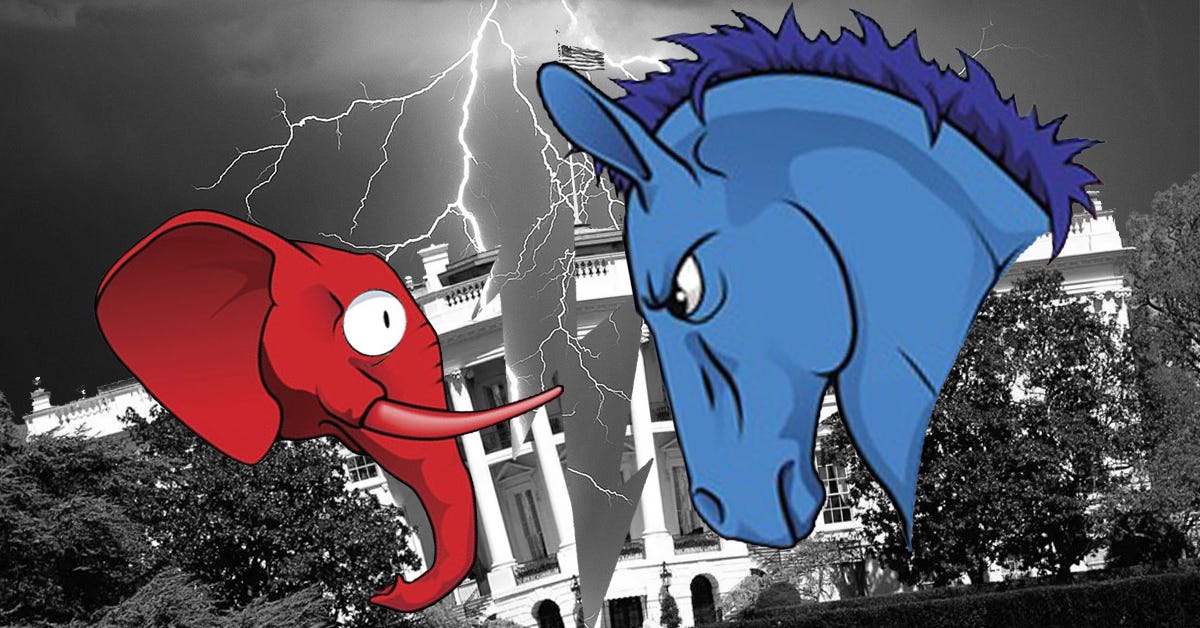A palpable tension defines the current American political landscape. On one side stands a presidency characterized by constant controversy. On the other, a burgeoning, peaceful protest movement offers “indisputable visual evidence” of widespread and growing opposition.1
The escalating series of nonviolent demonstrations against Donald Trump, exemplified by the recent “No Kings” rallies, represents more than just disparate expressions of public discontent. These events constitute a movement on a measurable trajectory toward a critical mass of public participation.
By applying the “3.5% rule,” a data driven principle developed by political scientists Erica Chenoweth and Maria Stephan, it is possible to analyze this movement’s potential to create a political tipping point, one that could fundamentally challenge Trump’s hold on power.
The Anatomy of a Mass Movement
The anti Trump protest movement is not an isolated outburst but a sustained and growing campaign of civil resistance. Its most striking feature is its unprecedented scale.
The “No Kings” rallies brought millions of Americans to 2,700 protest sites across all 50 states, from major cities to small towns.1 This geographic and numerical breadth directly counters the narrative that opposition is confined to a small elite.
The movement is also defined by its peaceful, even joyful, tone, which has been instrumental in its growth. This nonviolent discipline is a core strategic advantage.
Research confirms that nonviolent campaigns attract significantly broader participation than violent ones because they lower the barrier to entry and have wider appeal.2
By remaining peaceful, the movement has successfully weathered smear campaigns, thereby expanding the “threshold of acceptable risk” for new participants.1
The 3.5% Principle of Nonviolent Resistance
The “3.5% rule” is a powerful, data driven historical observation that provides a framework for understanding when mass mobilization becomes a critical threat to an entrenched power structure.
The principle stems from the groundbreaking research of Erica Chenoweth and Maria Stephan, who systematically studied 323 major campaigns for regime change that occurred between 1900 and 2006.3
Their key findings were transformative. They discovered that nonviolent campaigns were twice as likely to achieve their goals as violent ones, with a success rate of 53% compared to just 26% for armed struggles.2
Furthermore, they found that every single campaign that achieved active and sustained participation from at least 3.5% of the population succeeded in its goals.2
This threshold indicates a level of dissent so widespread that it becomes nearly impossible for a government to ignore or repress it, creating immense pressure on the key “pillars of society” that a leader relies on to maintain control.3
Measuring the Momentum
The anti Trump movement is not only growing, but it also appears to be accelerating toward the historically significant 3.5% threshold.
Based on a U.S. Census Bureau population projection of approximately 342 million for 2025, the 3.5% threshold translates to about 12 million people.4
The data from the three major national protests this year reveal a powerful upward trend. The “Hands Off” rally in April mobilized 3 million people, the first “No Kings” rally in June drew 5 million, and the second in October attracted 7 million participants.1
This data shows that in approximately six months, the movement grew from just under 1% of the population to over 2%. It has already surpassed the halfway point to the 3.5% threshold.
At this rate, the threshold could be crossed within the next two to three coordinated national actions.1
Join the resistance. Subscribe for more fearless commentary. Your support keeps this space open and ad-free for everyone, paid or unpaid.
The Tipping Point and Its Limits
Reaching the 3.5% threshold would not be an automatic victory but the trigger for a new and decisive phase. A movement of this size signals to all political actors that public opinion has decisively turned.
This can trigger a “loyalty shift” cascade, making it politically costly for key figures within the leader’s own party, the business community, and the security establishment to maintain their support.3 However, applying this historical pattern to the contemporary United States requires nuance.
Chenoweth herself refers to her finding as a “rule of thumb” and a “descriptive statistic,” not an unbreakable law of politics.2,7 The original research focused on “maximalist” campaigns seeking to overthrow autocratic regimes, a different context from pressuring a leader within a liberal democracy.6
Furthermore, modern authoritarian leaning leaders are now aware of this research and have developed tactics to subdue or ignore large scale movements.5
Conclusion: A Path to Political Change
The evidence strongly suggests that the nonviolent resistance movement against Donald Trump is on a quantifiable and accelerating path toward a historical tipping point.
The movement’s impressive scale, peaceful character, and ability to mobilize ever larger segments of the population have created the conditions for a potential political shift.
Reaching the 3.5% threshold would signal the beginning of a final phase, where the withdrawal of public support becomes too widespread for the pillars of power to ignore.
The ultimate outcome will depend on the movement’s ability to sustain its momentum, maintain its nonviolent discipline, and translate the energy from the streets into tangible and unrelenting political pressure.
The data shows the potential is undeniably there; history shows what becomes possible when such potential is fully realized.
Works cited
The Resistance Is Growing, accessed October 21, 2025,
Civil Resistance and the 3.5% Rule: An Overview, accessed October 21, 2025, https://commonslibrary.org/chenoweth-3-5percent-rule/
How Peaceful Protest by Just 3.5 Percent of Americans Could Force ..., accessed October 21, 2025, https://www.americanprogress.org/article/how-peaceful-protest-by-just-3-5-percent-of-americans-could-force-major-policy-changes-from-the-trump-administration/
Happy New Year 2025! - U.S. Census Bureau, accessed October 21, 2025, https://www.census.gov/library/stories/2024/12/new-year-population.html
What is the 3.5% protest rule and what does it mean for the US? | US ..., accessed October 21, 2025, https://www.theguardian.com/us-news/2025/jul/17/what-is-the-3-5-percent-protest-rule
The Harvard Professor Who Quantified Democracy, accessed October 21, 2025, https://www.harvardmagazine.com/2025/07/erica-chenoweth-democracy-data-harvard
Social movements and the (mis)use of research: Extinction Rebellion and the 3.5% rule, accessed October 21, 2025, https://www.interfacejournal.net/wp-content/uploads/2020/07/Interface-12-1-Matthews.pdf





Im ready.
Well-researched and articulate. And most of all...it gives me Hope❤️
. Thank you